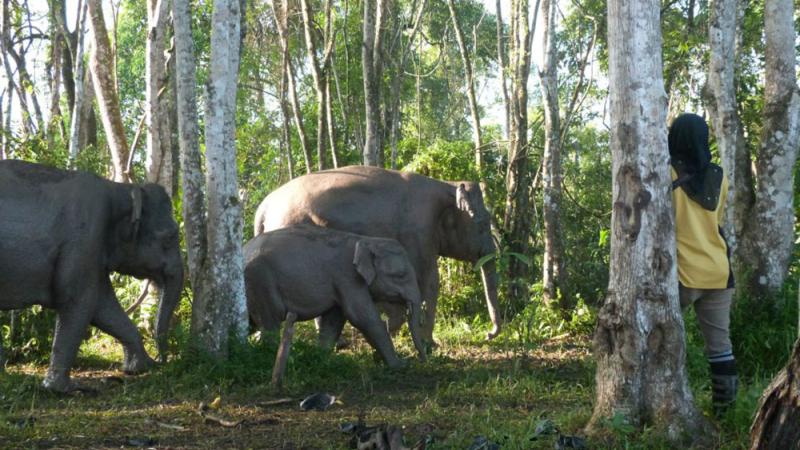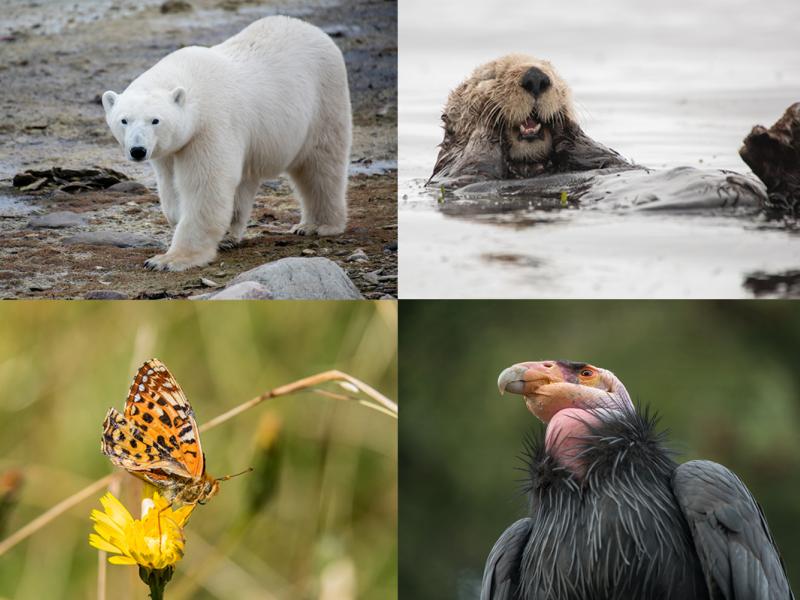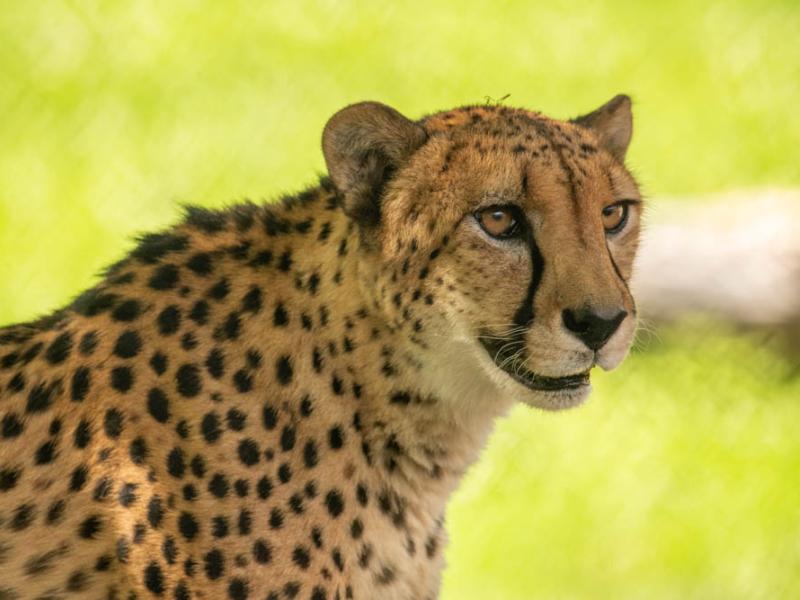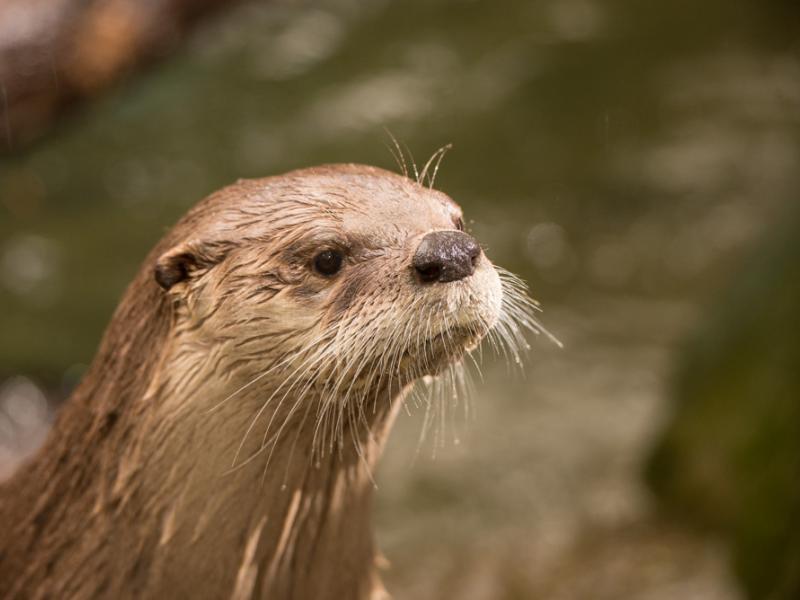Living together with elephants: A Q&A with Farina Othman

Elephants, communities of people and the palm oil industry all come together in the Kinabatangan floodplain — a region of great importance for biodiversity and Malaysia's economy. We talked with Dr. Farina Othman, an elephant ecologist there, whose nonprofit Project Seratu Aatai is working to help the region coexist with endangered Borneo elephants and other wildlife.
Oregon Zoo: How are Borneo elephants doing? What are they facing right now?
Farina Othman: It's a crucial period for Borneo elephants because they are very limited in terms of distribution and they are competing with people for the same resources. There used to vast tropical forests in Sabah. But to develop our country, we sacrificed a lot of our natural resources. We forgot the needs of our wildlife when we transformed the landscape. In Sabah, it is a challenge for people to understand why living together with the elephants is important.
OZ: What's causing the conflict?
F: Elephants usually avoid any area with people present, but in Kinabatangan, we are surrounded by open plantations. Elephants have been diverted to other places, and usually these are local community settlements. If elephants have the option, they will not go through settlements, through villages. But because they don't have any other choice, they are forced to. Imagine having only a small plot of land that sustains your livelihood — and suddenly a big animal comes and pushes down your trees, destroys or damages your property. Obviously, you would feel scared and upset. You would do anything to protect yourself and your family. Now, imagine yourself as a big animal that requires 150 kilos of food every day, and suddenly your route has been disturbed, or you cannot access the resources you need. When people harass you, stopping you from going there, you become aggressive to protect yourself — to eat, to live. Whatever happens to us people is also felt by the elephants.
OZ: What does your organization do?
F: I need to convince people that the elephants mean no harm — they are just trying to survive, much as we are trying to survive. I have an advantage because I understand the local community here. We speak the same language. I know the rules, how to approach them. Our organization is Seratu Aatai, which means "living together," because we want to introduce the idea that we can live together with elephants. There is no one solution that applies to all of the villages. You have to go and sit with them, understand what their challenges are, and then you come up with the solutions together.
OZ: How have you been collaborating with the Oregon Zoo?
F: The Oregon Zoo helped us come up with a guide to elephant behavior. The idea is to introduce elephant behavior in a very simple and interactive way, and help people understand the signals that the elephants give — when they are relaxed, when they are upset and things like that. It's important to share those signs so people can differentiate between an elephant that is just curious and one that is ready to charge them. This guide will be a great tool for us — it builds the confidence of people when they are dealing with the elephants.
OZ: Is the palm oil industry helping?
F: Yeah, we have found incredible industry players who want to work with us, who know that they must do something. In this eastern part of Sabah where the elephants are living, you either find palm oil plantations or a little bit of forest and people's developments. If you want to ensure the survival of elephants in Sabah, the elephant needs to live outside of the forest — which means palm oil plantations. We need to work with them, with the industry. Right now, they are replanting most of the plantations so there is an opportunity to rearrange the landscape. This is where you can advise them — where to put the wildlife corridor, where to give better protection and things like this, to accommodate the needs of the wildlife. It's really, really important right now to work with them instead of blaming them. I feel that we have the opportunity here — it's just that we must try to find our common ground, and then when we plan for something, it's not for the sake of us, it's for the sake of the wildlife and other living things.
OZ: Can elephants survive in this kind of mixed landscape?
F: The new story is that elephants can survive in this landscape. It's not the ideal landscape for them, but they can still adapt or use a few resources in the plantations. We must try to introduce this idea, to shift the paradigm from having animals just living in the protected area in the forest and try to accommodate them in this landscape. Because the damage has been done. If you plant trees, it's not going to be like real forests. Then if the elephants, if the wildlife are found doing good in this landscape, we shouldn't change that.
OZ: What gives you hope?
F: What makes me optimistic is the spirit of the wildlife itself. They're not giving up. So much of the landscape has been converted, but still our wildlife finds a way to adapt to the new environment. And I can see a lot of people in my own community have realized the importance of having wildlife for the next generation. That also gives me hope. A lot of people want to speak, they want to listen — which is the first step for a better world for the wildlife, for the elephants.
More News

Take action: Protect wildlife by protecting their homes
Speak up to protect wildlife. Submit a public comment urging the government to keep the Endangered Species Act strong — including protections for habitat.May 8, 2025

Zoo mourns Strike, one of oldest male cheetahs around
At 15, Strike was considered geriatric for his species and was the second-oldest male cheetah living in an AZA-accredited zoo.May 8, 2025

Zoo says goodbye to Tilly, beloved otter mom
At 16, Tilly was considered geriatric for her species.April 30, 2025

